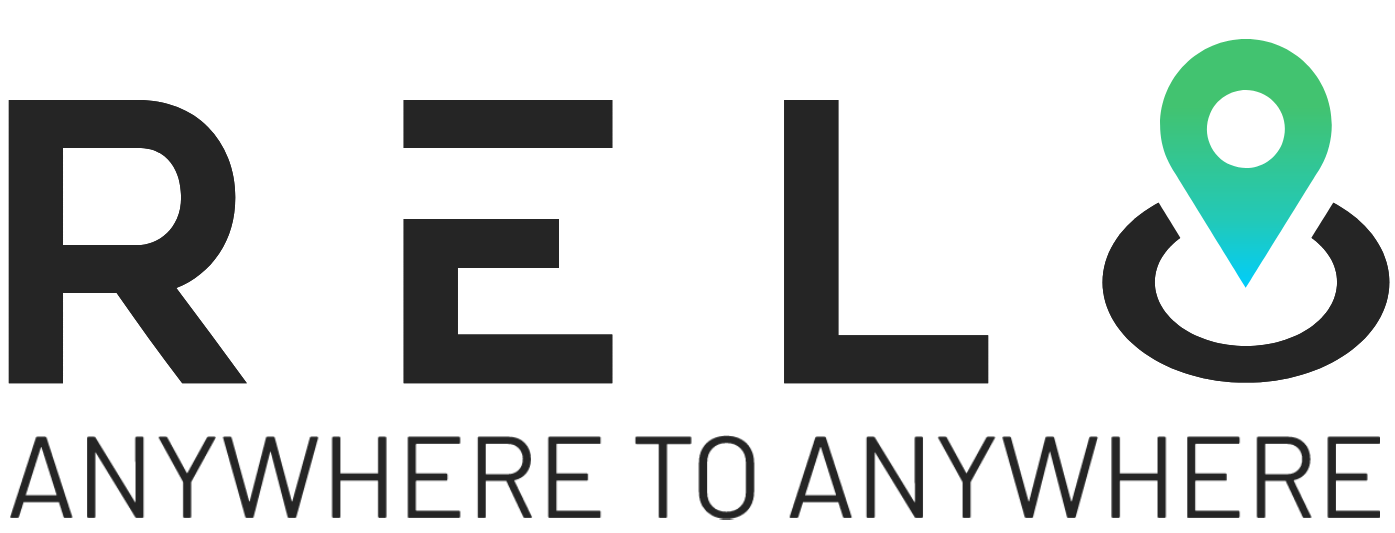Relocating an office is never as simple as packing boxes and calling movers. Businesses lose an average of $10,000 to $30,000 for every day of unplanned downtime during office moves, according to Atlassian. Structured coordination is essential to avoid departmental disruptions, IT setbacks, or internal confusion. An office relocation checklist is vital for organization and operational continuity.
From assembling internal teams to syncing IT and telecommunications, each move phase must align with business and financial goals. The proper relocation checklist helps manage vendors, notify stakeholders, and inform employees.
A timeline-based approach also reduces the chances of overlooking small yet critical tasks.
This detailed walkthrough covers each checklist and provides a trusted framework for action.
Establish a Strategic Office Relocation Committee
To begin with, the first step in any office move starts internally by forming a relocation committee. This cross-functional group includes operations, HR, IT, facilities, and finance leaders. Together, each member contributes by planning and addressing department-specific needs. Committee members should receive clearly defined responsibilities.
For instance, IT leaders oversee tech transitions, while HR manages employee communication and morale. As a result, establishing roles reduces overlap and encourages accountability throughout the process.
This team will remain the central hub for decision-making and updates as the process continues. In addition, they oversee timelines, select vendors thoughtfully, and monitor budgets closely.
Set a Practical Moving Budget Plan
Every successful move requires a transparent, flexible budget. The smart office relocation checklist should factor in all foreseeable costs, including movers, real estate fees, furniture, renovation, technology setup, and marketing updates. Unexpected relocation expenses, including additional cabling, cleaning fees, and temporary workspaces like corporate housing requirements, often arise during relocation.
Businesses that prepare for contingencies maintain momentum and avoid last-minute financial surprises. Finance leaders provide accurate estimates and help preserve cash flow when they join the planning process early. A solid budget lays the foundation for every logistical and strategic decision during the transition.
Look at the example of how a planned relocation budget avoids unexpected costs –
| Relocation Expense | Typical Estimate (Without Planning) | Planned Budget with Checklist | Estimated Savings Potential |
| Professional movers | $6,500 | $5,000 | $1,500 |
| Real estate and lease fees | $9,500 | $8,000 | $1,500 |
| New furniture and fixtures | $14,000 | $12,000 | $2,000 |
| Office Renovation | $8,500 | $7,000 | $1,500 |
| IT and tech setup | $12,000 | $10,000 | $2,000 |
| Temporary workspace | $5,000 | $4,000 | $1,000 |
| Cleaning services | $2,000 | $1,500 | $500 |
| Utility transfers and setup | $1,500 | $1,000 | $500 |
| Contingency reserve | None | $5,000 | Prevents last-minute overages |
Total Savings from Proactive Budgeting – $10,500
This breakdown shows how a strategic office relocation checklist and budget plan can prevent overspending and reduce friction. It also creates financial breathing room during a high-pressure transition.
? Related – 10 Genius Ways to Relocating on a Budget
Choose the Best New Location
Selecting the right office involves more than square footage and lease rates. You must also consider commute accessibility for staff, client proximity, and room for future expansion. Ultimately, this decision shapes productivity and morale, and your company is perceived externally.
Next, consider multiple spaces before finalizing any lease agreement. Additionally, ask team leaders for input and take them on scheduled site visits.
In fact, according to a Gensler workplace study, 88% of employees say the quality of their workplace directly impacts their job satisfaction.
Many teams in post-pandemic environments now favor modern layouts, increased natural light, and flexible work areas.
Finally, your office relocation checklist should include lease negotiations, legal reviews, and insurance assessments. When chosen with purpose, your new location acts as a launchpad for the next phase of your business growth.
Notify All Critical Business Stakeholders
Once relocation is confirmed, communication becomes critical to the process. First, start with internal announcements explaining the move’s reasons, the projected timeline, and what teams should expect. As a result, transparency builds trust and reduces speculation. Next, notify external stakeholders. Clients, vendors, partners, and service providers should receive formal communication outlining the changes.
This step ensures continuity and preserves business relationships. In addition, update addresses across all digital platforms, printed materials, and business licenses. Keeping everyone informed avoids confusion and reinforces your company’s professionalism.
Ultimately, an office move impacts more than the physical space. It also shapes relationships and perceptions when handled with clarity and care.
Design the Ideal New Office Layout
Workplace design directly impacts collaboration, productivity, and well-being. Therefore, department heads should be involved in creating a functional layout that balances open spaces, quiet zones, and shared resources. Your office relocation checklist must include compliance with safety and accessibility standards.
At the same time, consider how employees use the space daily. For instance, does your sales team need privacy for calls? Should your developers have areas to brainstorm without distraction? Designing with current and future needs in mind helps future-proof your new workspace.
Once the layout is approved, create floor plans and assign desk locations to streamline move-in day. Communicating seating arrangements helps ease everyone’s transition and reduces confusion.

Coordinate Business IT and Telecommunications
Relocating technology infrastructure is one of the most complex aspects of an office move. Start by auditing existing equipment and determining what should be upgraded or retired. Inventory every device, phone line, server, and workstation.
Work closely with IT providers to plan installation, internet setup, VoIP systems, and secure backups. Ensure downtime is minimal by scheduling migration outside of core business hours.
An IT timeline as part of your office relocation checklist ensures nothing gets lost, damaged, or improperly configured. Protecting your data and restoring digital operations is a top priority.
?♀️ Also read – The Benefits of Outsourcing the Corporate Relocation Process
Choose a Trusted Relocation Service Provider
Many moving companies lack the tools or experience to handle office transitions, so vet your vendors carefully. Request quotes, verify references, and prioritize experience with commercial clients. Confirm that your selected company handles large-scale logistics, offers insurance coverage, and can adapt to scheduled shifts.
Relo AI expertly manages office relocations, positioning itself as a trusted partner for both growing businesses and large-scale enterprises. Our commitment to excellence ensures a seamless transition, allowing you to focus on what truly matters—growing your business.The right relocation management company services for entrepreneurs and corporations can mean the difference between chaos and confidence. Choose wisely and ensure contracts detail responsibilities and timelines.
8. Order Office Furniture and Equipment
At this stage, new spaces often require updated furnishings to match your evolving work environment. First, identify the equipment your office needs, from ergonomic desks and chairs to collaborative lounge furniture. Your checklist should clearly outline what gets reused, what needs replacement, and what should be retired.
Next, work with suppliers early to manage delivery timelines effectively. Many commercial items require several weeks of lead time, especially when custom-ordered. Be sure to include some of the best accessories for office setups, such as printers, whiteboards, conference phones, and security systems, to maintain functionality from day one.
In addition, coordinate delivery schedules with your planned move-in date to avoid congestion and temporary storage issues. Clear communication with vendors ensures a smoother setup and avoids delays.
As a final step, conduct a walkthrough with department heads to verify that each team has what it needs. A furnished and fully functional office immediately helps your staff feel comfortable and productive.
9. Begin Packing and Labeling Early
To stay on track, begin packing well in advance, starting with nonessential items not used daily. Clearly label every box by department, contents, and new location. Assign colour codes to each box to simplify unpacking and prevent setup confusion.
Next, provide staff with packing guidelines, materials, and clear deadlines. Encourage everyone to clear personal spaces, discard unused items, and secure valuables ahead of the move.
According to a Staples workplace survey, 77% of employees say a disorganized move affects productivity.
Clear instructions reduce relocation anxiety and improve team collaboration. Keep an updated inventory sheet to monitor all equipment throughout the move.
Structure and visibility remain essential for a seamless transition if you relocate a 10-person startup or a 200-employee division.
10. Arrange All Office Utilities and Services
No business should enter a new office without essential services like power, water, or internet to avoid disruption. Therefore, as part of your office relocation checklist, transfer or initiate all utility services at least 30 days before the move-in date. It includes electricity, water, internet, phone lines, HVAC, and waste services.
Confirm installation appointments early and coordinate site access for technicians. At the same time, notify your current providers about end-of-service dates to prevent double billing and unnecessary charges.
Schedule a professional cleaning for both the old and new spaces. Moreover, a fresh environment boosts employee morale and supports a smooth remote onboarding experience in the new workspace.
11. Oversee and Manage Relocation Week
As relocation week arrives, start by confirming all plans. Back up company data, secure valuable equipment, and assign supervisors to oversee every stage of the move. Additionally, have your team complete final walkthroughs at both locations to catch any overlooked details before leaving the old space. Prioritize critical departments such as IT, HR, and reception at this point.
Business continuity depends on getting these key teams online and fully operational as soon as possible. Throughout the moving day, actively monitor each phase. Track deliveries, inspect furniture setups, and verify utility functionality. Address issues in real-time to prevent delays.
Apps like Trello, Asana, and ClickUp can help you assign tasks, track progress, and communicate with your relocation team from anywhere.
Moreover, document all incidents, updates, and vendor interactions for future reference. Employees can return to business operations with minimal disruption when everything runs on schedule.
Finally, maintain morale by providing snacks, hydration, and clear communication throughout the day. A smooth move boosts confidence and builds momentum for your team’s next chapter.
Recommended read – Why a Job Relocation Consultant Is the Best Career Investment
12. Handle Key Post Move Adjustments
Once settled, begin by assessing the new environment thoroughly. Check core systems, including internet, lighting, HVAC, and access control, to ensure everything runs smoothly. Then, follow up with team tours, on-site tech support, and workstation customizations tailored to individual needs.
Next, gather employee feedback through quick surveys or department meetings. This input helps identify unresolved issues and shape a focused action list. Adequate post-move support ensures your staff remain engaged and confident in their new workspace.
Address any minor disruptions immediately to maintain productivity. A responsive approach shows leadership is listening and ready to adapt.
Team-building activities should be encouraged to reintroduce culture and rebuild collaboration. An office relocation checklist marks a fresh chapter for your company, and finishing strong sets the tone for long-term success.
Small details during this final phase leave a lasting impression, shaping future employee satisfaction.
Comprehensive Office Relocation Checklist (Download Pdf)
Relocating your office involves a strategic shift for businesses expanding into new markets, hiring new teams, or upgrading infrastructure. If you are relocating a startup or restructuring operations, this office relocation checklist helps precisely manage every detail.
It simplifies compliance, safeguards productivity, and reduces downtime. It lets you focus on growth while the logistics fall into place. This guide gives you the entire roadmap, starting from early planning and continuing through post-move setup.
In addition, this checklist helps business owners manage timelines, vendors, teams, and facilities without stress.
You can also share this PDF with your teams to keep everyone aligned throughout the move. They ensure each department understands its responsibilities, timelines, and tasks.

Start Your Office Move the Right Way with Us
An office relocation checklist becomes your operational blueprint when shifting teams, infrastructure, and productivity under one roof. When used strategically, it not only aligns departments but also protects timelines. It keeps business operations uninterrupted throughout high-impact transitions. Decisions must include compliance, IT infrastructure, vendor contracts, and team workflows. An overlooked detail can cost more than time, affecting your team’s ability to function.
At Relo.AI, we’re thrilled to partner with business owners at every stage of their office relocation journey. Whether you’re expanding into a larger headquarters or setting up new satellite offices, we leave no logistical or regulatory stone unturned.
Our all-encompassing relocation support caters to startups, midsize teams, corporations, and remote-first businesses alike. From orchestrating vendors and designing floor plans to managing permits and streamlining communication, we tackle every complex layer with expertise.
Why leave your critical office relocation to chance and risk costly disruptions? Schedule an introductory meeting with our relocation specialists today to explore a smarter approach!











